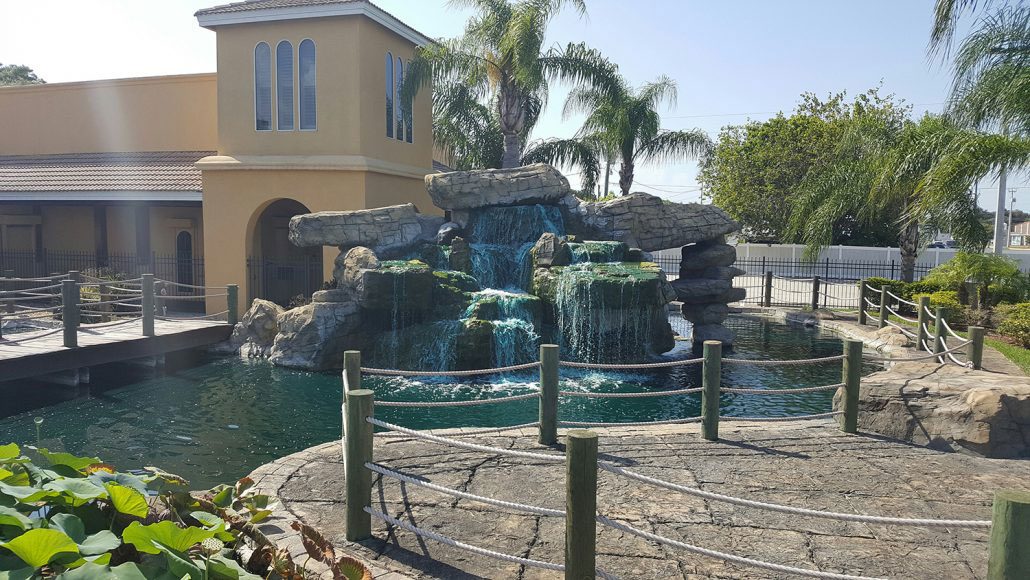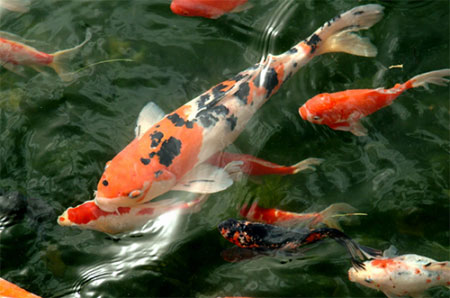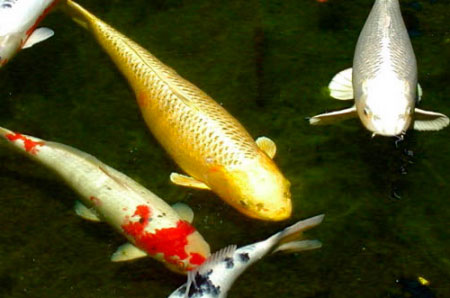The Incredible Koi Pond
of Florida Gun Exchange..


When visiting Florida Gun Exchange, don’t forget to check out our impressive 77,000 gallon Koi Pond with the family before or after you visit our store!
(Please keep in mind) Our Koi Fish are on specific diets, please only feed them with fish food provided by Florida Gun Exchange


THE KOI POND OF FLORIDA GUN EXCHANGE
Koi varieties are distinguished by coloration, patterning, and scalation. Some of the major colors are white, black, red, yellow, blue, and cream. The most popular category of koi is the Gosanke, which is made up of the Kohaku, Taisho Sanshoku, and Showa Sanshoku varieties.


HISTORY OF KOI
Carp are a large group of fish originally found in Central Europe and Asia. Various carp species were originally domesticated in East Asia, where they were used as food fish. Carp are coldwater fish, and their ability to survive and adapt to many climates and water conditions allowed the domesticated species to be propagated to many new locations, including Japan. Natural color mutations of these carp would have occurred across all populations. Carp were first bred for color mutations in China more than a thousand years ago, where selective breeding of the Prussian carp (Carassius gibelio) led to the development of the goldfish.
The common carp was aquacultured as a food fish at least as long ago as the fifth century BC in China, and in the Roman Empire during the spread of Christianity in Europe. Common carp were bred for color in Japan in the 1820s, initially in the town of Ojiya in the Niigata prefecture on the northeastern coast of Honshu island. By the 20th century, a number of color patterns had been established, most notably the red-and-white Kohaku.
The outside world was not aware of the development of color variations in koi until 1914, when the Niigata koi were exhibited at an annual exposition in Tokyo. From that time, interest in koi spread throughout Japan. It was from this original handful of koi that all other Nishikigoi varieties were bred, with the exception of the Ogon variety (single colored, metallic koi) which was developed relatively recently. The hobby of keeping koi eventually spread worldwide. Koi are now sold in many pet aquarium shops, with higher-quality fish available from specialist dealers.
Extensive hybridization between different populations has muddled the historical zoogeography of the common carp. However, scientific consensus is that there are at least two subspecies of the common carp, one from Western Eurasia (Cyprinus carpio carpio) and another from East Asia (Cyprinus carpio haematopterus). One recent study on the mitochondrial DNA of various common carp indicate that koi are of the East Asian subspecies. However, another recent study on the mitochondrial DNA of koi have found that koi are descended from multiple lineages of common carp from both Western Eurasian and East Asian varieties. This could be the result of koi being bred from a mix of East Asian and Western Eurasian carp varieties, or being bred exclusively from East Asian varieties and being subsequently hybridized with Western Eurasian varieties (the butterfly koi is one known product of such a cross). Which is true has not been resolved.
